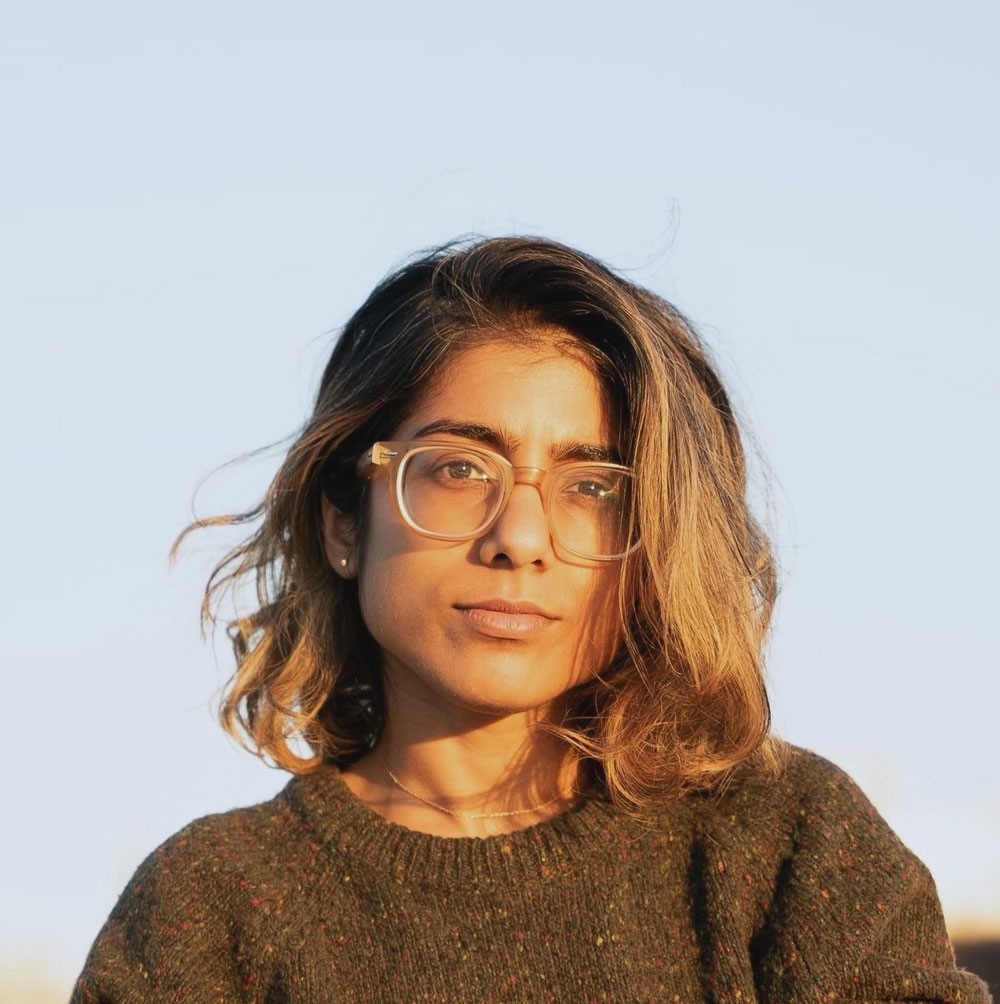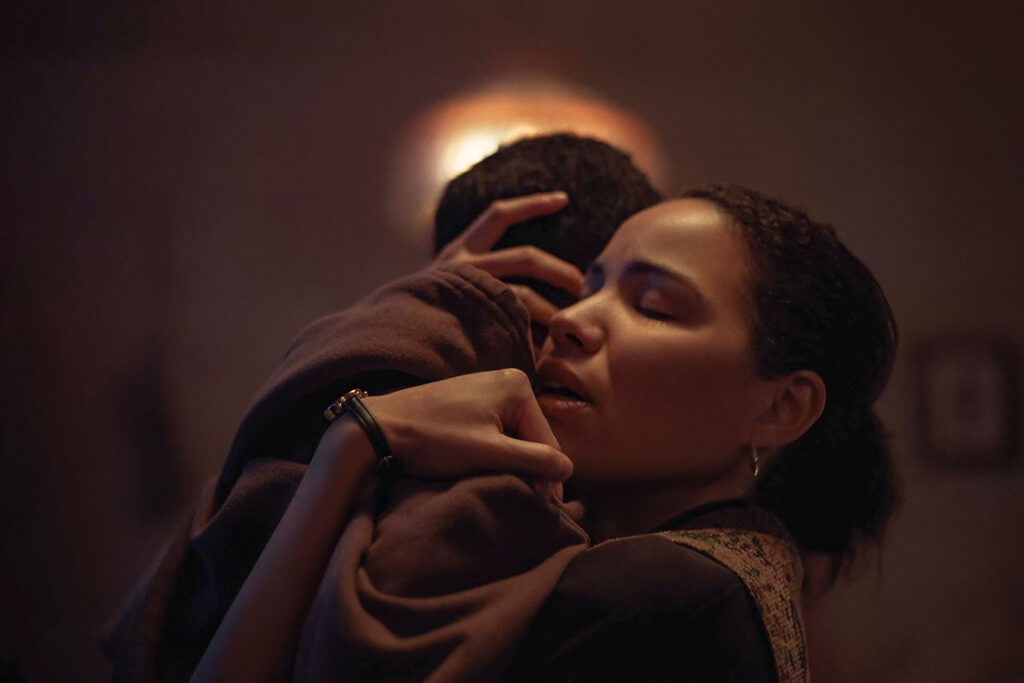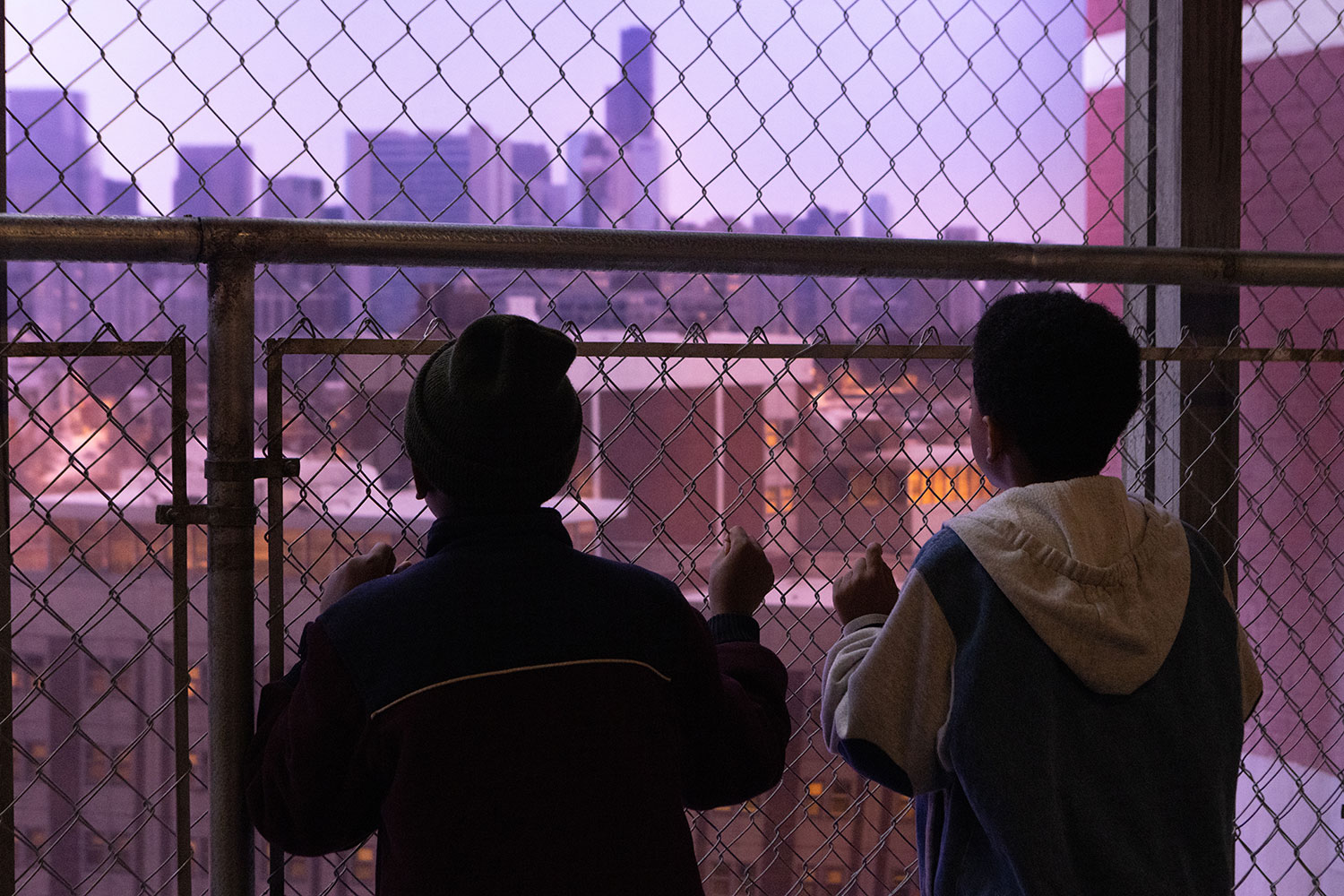New York has Woody Allen, Spike Lee, Martin Scorsese to tell its stories. Directors who over the course of lengthy and legendary careers have given us full and comprehensive autobiographies of their city through their thoughts and lenses that have let us know everything there is to know about the Empire State and its mind. Los Angeles had, at times, Robert Towne and, always, John Singleton. Chicago? We had John Hughes. We have Steve James. We got Coodie Simmons. And now Minhal Baig is making a case for herself as Chicago’s next big director.
With her second feature film Hala (2019) and now the upcoming We Grown Now, Baig has grown from a new directorial voice that needed to be heard in the independent film ecosystem to a generational director whose voice could soon become one of the most essential and unique for the future of Hollywood. Her latest is an understated homage to Chicago: We Grown Now explores the friendship of two boys — Malik and Eric — living in the Cabrini-Green housing projects in 1992. The movie has subtle shout-outs to Hughes’ Ferris Bueller’s Day Off and Michael Schultz’s Cooley High; and it’s more what Lee’s Crooklyn was to Brooklyn than his Chi-Raq was to us.

Chicago recently spoke with the 2023 Toronto International Film Festival Changemaker Award-winning writer/filmmaker prior to the public introduction of We Grown Now on April 19 about this place she calls home.
Coming up in Chicago, how has your upbringing here guided you to this point in your storytelling as a filmmaker?
I’ve always been a Chicago kid. I was born and raised here, grew up in Rogers Park, went to public school — I’m a CPS kid — and in terms of where I come from and how I’m making and writing these stories, I’m coming from the perspective of wanting to know more. I’m not an outsider to this city. People would ask me where I’m from and what school did I go to, and I’d tell them I’m from here and that helped form trust. I’ve never experienced hostility from anyone that I’ve interviewed here in the process of making a film. Everyone’s been very open with me in sharing their stories.
But you essentially are a North Sider. How did you get from Northside College Prep to telling a story about Cabrini-Green?
Yeah, Rogers Park is a bit of a distance away from Cabrini-Green and when I was growing up the Cabrini-Green high-rises were general knowledge, people were very much aware of them. By the time I was graduating college the last of the high-rises had already been demolished. So when I returned to Chicago after that, Cabrini was a much different place.
To me, the fact that Chicago had these high-rises that were all demolished is a pretty significant part of the city’s history. It became interesting that it was something people would rather leave in the past than acknowledge. To me, it’s something that needs to be acknowledged if we want to move forward in the future because there were thousands of people and their families who were displaced, whose homes were taken away from them. And in my mind, being from Chicago, Cabrini-Green is such a significant part of Chicago history. Its whole story is something I feel everyone should know about, especially the politics around that time in the early ’90’s.
You seem to be, with Hala and now with We Grown Now, shaping a Chicago narrative that is very beautiful and about people who are often overlooked in the telling of stories about Chicago in film.
In my approach to filmmaking I’m never setting out to perform an aesthetic. I’m never trying to make a film look or feel like something. I approach from a place of truth. I want (my films) to be truthful, especially emotionally truthful for people. I have to lead with my heart in the work that I do, that’s the sensibility that I approach storytelling with. I was trying to portray the city with a lot of beauty and newness. Chicago often gets short-tripped as the “third city” in comparison to New York and Los Angeles while I think it’s one of the most beautiful cities in America.

I felt in making (We Grown Now), we were doing something really different. And in the approach that we had, we really wanted to show Cabrini-Green and the community in a different lens. We wanted to do it in the perspective of the kids, for Cabrini-Green was the only place they’d known as home. With that perspective, it really changes the way (the audience) looks at the high-rises. In doing that it’s sometimes difficult to predict the audience’s response, especially the response from people who lived there, who lived in the high-rises. Because to us — those who aren’t from there — this is a movie. To them, that was their lives. So I approached it knowing that I wanted to pay close attention to the details and make sure that we were presenting things in a way that was both accurate but also still truthful to the perspective that we were sharing.
Obviously the movie acknowledges that this was a challenging place to live — but there was also joy and of course love and there was beauty in that community. And the film is trying to capture all of those things, as well as being honest about what it is like being a kid growing up in the high-rises.
I have to say that as a Black individual understanding the binary life that we have to live of struggle and beauty, very rarely do you get that portrayed with a true sensitivity on film. You did a great job of capturing what that struggle is like but also how we have to navigate that and find beauty, find that silver-lining in our generational existence in those settings. The film did a great job in putting a light on what that dichotomy feels like.
I love that you describe it as a binary experience. In media, the culturally dominative narrative of (Cabrini-Green) was it being very dangerous and full of drugs, crime activity, and violence. Now, there’s truth in that — but there’s also another truth, which is there were thousands of people living there who had loving families, they had friends, they had everyday lives, and there was beauty in those lives. But so often the depiction of a place like Cabrini-Green or public housing more generally is just a depiction of people struggling. In this film, the way we approached it was to embrace both realities. Because two things can be true at the same time.
From your perspective as this film’s filmmaker, what does the mattress represent?
It represents joy. On the outside, to an adult, from an outsider’s perspective, the mattress is just trash. It’s not usable. But to the kids, they can use it for jumping and it’s fun. The mattress becomes the perfect place in the film to show the differences in perspectives. To the outside perspective it doesn’t have any function anymore, but to the kids, they have imagination, they have play, they see the mattress as an incredible find. For me, it perfectly encapsulated a way to get into the kids’ minds and how something that doesn’t have value to some has great value to others.
When you don’t have much it doesn’t take much to find happiness.
Exactly. They were making the most out of what they had. And I think that speaks to their resilience.
The two central characters, Malik (played by Blake Cameron James) and Eric (played by Gian Knight Ramirez) — would it be fair to say that their lives in this film could easily be the prequel story to Preacher and Cochise’s story from Cooley High?
Ha. I love that you ask that! I love Cooley High by the way. The escape from school itself was one of my favorite scenes. In making this film I actually thought about having one of the kids crawl under the desk (to get out of class in school), but I thought that that might be too close to Cooley High. That movie was an incredible film, such a snapshot of the time and place, but it has a really devastating ending.
One of the reasons that movie affected me so much is that you live in the world of levity and fun for so long and then reality hits. It makes the tragedy all the more tragic. The experiences we had during the course of that film with the characters made them everyday people. And that’s what I felt was very much missing in more recent depictions of places like Cabrini-Green. So I wanted to make sure that was present in my movie, which made Cooley High one of my great references for this film. I think Cooley High and We Grown Now would make a great double feature. I think maybe in watching both films it could give you a different sense. Because as the kids in Cooley High are older, Malik and Eric’s story comes after the time when Cooley High was set. So you’d get to see the similarities in their stories but through a different lens.
There’s a line in We Grown Now that was one of the most powerful lines I’ve heard in a while in film. “If you don’t grow, these babies won’t.” Could you dive into that line?
I feel like Jurnee (Smollett, who plays Dolores) has an even better response to the question because she’s been asked this by other interviewers about the film. I’m paraphrasing, but she says, “For her as a mother, becoming a better parent required parenting one’s self.” The rhetorical question became, how can you raise a whole child without being a whole person or a whole parent? And in that scene you see the mother (S. Epatha Merkerson) reaching across the table and reminding her daughter that she also needs to take a step into the unknown and move toward the fear.
In media, the culturally dominative narrative of (Cabrini-Green) was it being very dangerous and full of drugs, crime activity, and violence. Now, there’s truth in that — but there’s also another truth, which is there were thousands of people living there who had loving families, they had friends, they had everyday lives, and there was beauty in those lives.
It’s very hard to leave a place that you’ve been attached to. For Delores, the apartment, the building, the neighborhood is really closely tied to her father and it’s only when she’s able to look to the future to realize that, “I need to be able to move forward in order for my kids to be able to move forward.” And I’m personally just realizing now, recently becoming a parent, a fresh parent (laugh), how that has changed how I view the movie now. Because Delores’s character in the movie is moving toward the fear. By making the choice to move away from her foundation, she’s not just doing it for the kids, she’s doing it for herself.
Jurnee is amazing in the film, she’s basically amazing in anything she does. But please explain the casting of Lil’ Rel (Howery) as Eric’s father. He’s kind of Chicago royalty at this point. He was very strong in a non-comedic role.
First off, I agree Jurnee is amazing. When she read the script for this movie she wasn’t just thinking about her part, she wanted to see this movie get made. So we spent time collaborating on the script with her giving me feedback. And all of her feedback came from wanting the movie to be more truthful. She was drawing from her experiences, her mother’s experiences, her grandmother’s experiences in channeling her character, along with doing an incredible amount of research.
Now Lil’ Rel, I’ve seen him mostly in comedic roles and honestly, I love him and I just wanted to see him in this movie (laugh). He said when he read the script that he just hadn’t read something like it before. He wanted to see the story and film get made because he felt it was doing something different. His character, as Eric’s father (who is raising two kids as a widower), is doing the best that he can to raise him in a world in which there is inequity and violence and tragedy all around them and he has to manage all of that while also protecting his kids’ joy. That’s a hard thing to do as a parent. And I genuinely wanted to see Rel in this part do something grounded and emotional. That one scene with Eric on the breezeway is one of my favorites in the film. He’s really reaching and emotionally connecting with his son when his son needed it the most.
I don’t want to categorize this film in any way, but one, would it be fair to say that this is a coming of age film that general audiences have not seen before and two, what is the single most important unspoken nuance you’d like for people to walk away with after seeing the film?
First, one of the things I came away with from this film — having made it — was realizing the nuances in how the childhood experiences, friendships, and moments have an impact on you for the rest of your life. That just because it’s a friendship between two kids doesn’t mean that it’s any less important. That the emotions of children should be given as much dignity as adults’ emotions are given because they are just as complicated and human. Which is why I do not see this as a movie just for young people, I think it’s a movie that can connect with anyone. At least, I hope that it does.
And it’s definitely a coming of age film in that the kids are at this transitional moment in their lives. But we don’t exactly know what happens to them at the end of the film. I wanted to leave that up to the audience. I wanted to make sure the movie began and ended in Cabrini-Green. That’s where we find the kids and that’s where we leave them even though that’s not the end of their story. I think what’s essential as we head toward the end of the film is what moving means to Malik and what Eric has taught him about this place and that he can feel proud of this place. And what Malik is giving Eric is that even here, in this place, you don’t have to limit your potential, you don’t have a ceiling just because of where you’re from. And I think that is exactly what they both need from each other. It feels very true to life.



